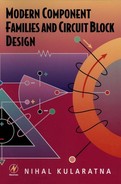Table of Contents
Chapter 1: Voltage References and Voltage Regulators
Chapter 2: Operational Amplifiers
2.2 Introduction to Amplifiers
2.3 Basic Operational Amplifier
2.4 Different Types of Operational Amplifiers and Application Considerations
3.4 Effects of Sample and Hold Circuits
3.8 Data Acquisition System Interfaces
Chapter 4: Microprocessors and Microcontrollers
4.5 Inside the Microelectronic Central Controller
4.6 Microprocessor Architecture
4.8 Single-Chip Microcontrollers and Embedded Processor Core Applications
4.9 RISC vs. CISC Microprocessor Architecture
Chapter 5: Digital Signal Processors
5.3 Comparison Between a Microprocessor and a DSP
5.4 Filtering Applications and the Evolution of DSP Architecture
5.6 Important Architectural Elements in a DSP
5.9 Interface Between DSPs and Data Converters
5.10 Practical Components and Recent Developments
6.2 Light-Emitting Diodes and Photosensors
6.5 Driving High-Level Loads with Optocouplers
7.2 The Properties of Silicon and Their Effects on Sensors
7.8 Humidity and Chemical Sensors
7.9 IEEE P1451 Standard for Smart Sensors and Actuators
7.10 P1451 and Practical Components
8.2 A Basic Semiconductor Physics-Based Approach to Analog Computation Circuits
8.3 Important Design Considerations in Nonlinear Devices
8.8 Benistor, a Newly Introduced Device
Chapter 9: Rechargeable Batteries and Their Management
9.3 Battery Technology: An Overview
9.6 Nickel-Metal Hydride Batteries
9.8 Reusable Alkaline Batteries
9.11 The System Management Bus, Smart Battery Data Specifications, and Related Standards
9.12 Semiconductor Components for Battery Management
Chapter 10: Programmable Logic Devices
